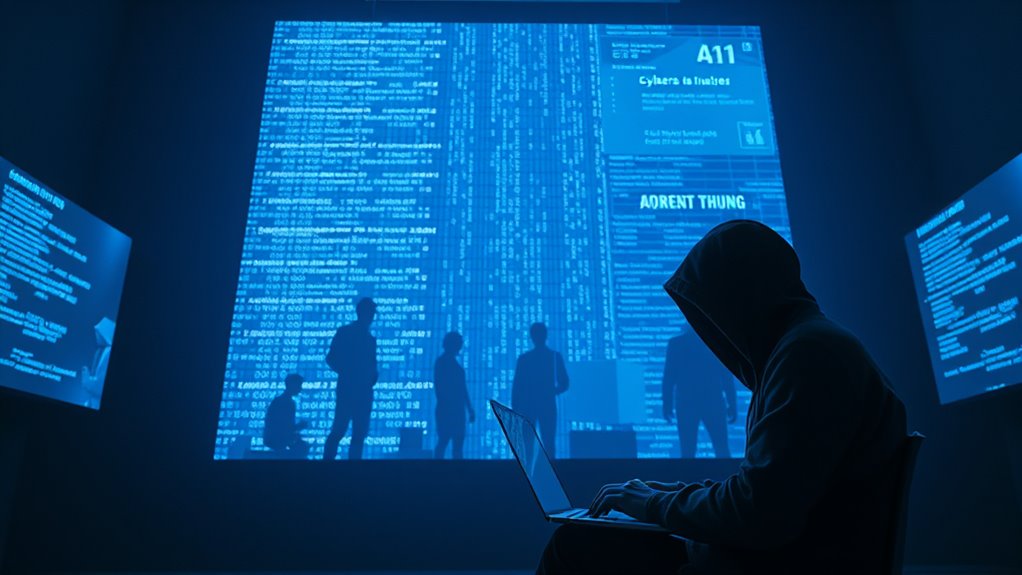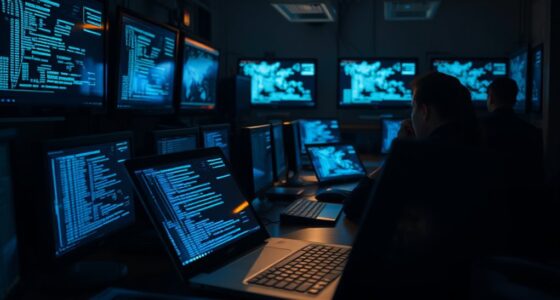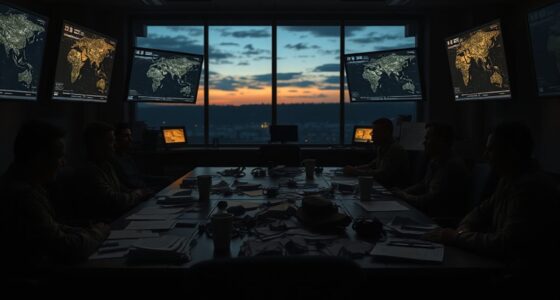The rise of cyberterrorism poses serious risks to national security as technology advances. You'll find that, unlike traditional terrorism, cyberterrorism uses prolonged campaigns to disrupt essential infrastructure, creating widespread fear. Incidents like the 2020 ransomware attacks on Costa Rica demonstrate how AI empowers attackers to exploit vulnerabilities more efficiently. Real-time collaboration between public and private sectors is key for enhancing cybersecurity measures. Discover more about the evolution of these threats and strategies for resilience.
Key Takeaways
- Cyberterrorism has evolved since 9/11, utilizing technology to target critical infrastructure and instill fear through prolonged disruption.
- The emergence of AI threats has transformed cyberattacks, enabling adversaries to exploit vulnerabilities more efficiently and maintain long-term access to systems.
- Real-time data sharing between government and private sectors is crucial for enhancing cybersecurity resilience and improving threat detection and response.
- The 2020 ransomware attacks on Costa Rica exemplify how cyberterrorism can cripple government operations and demand significant ransoms, highlighting urgent security needs.
- Investment in advanced technologies, including AI and big data analytics, is vital for adapting to evolving cyber threats and ensuring national security.
Understanding Cyberterrorism in the Modern Era
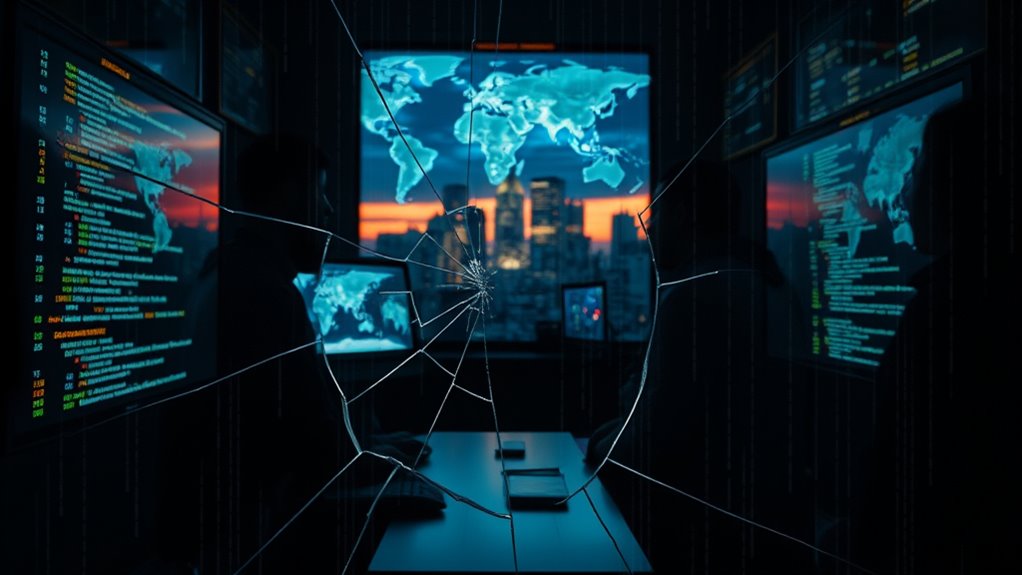
As cyber threats continue to evolve, understanding cyberterrorism in the modern era is essential for everyone. Cyberterrorism involves hacking aimed at disrupting public services, often targeting government systems and utilities to instill fear or achieve ideological goals.
With the rise of AI threats, attackers exploit security vulnerabilities more efficiently, causing significant disruption and potential real-world consequences. The 2020 ransomware attacks on Costa Rica's government by the Conti group highlight this risk, demanding $10 million while severely impacting indispensable services.
As concerns for national security grow, it's imperative for governments to enhance cybersecurity measures. Collaboration between government and private cybersecurity firms is critical for developing robust defenses against these emerging risks and protecting sensitive data and essential infrastructure.
Lessons Learned From 9/11 and Their Application to Cybersecurity
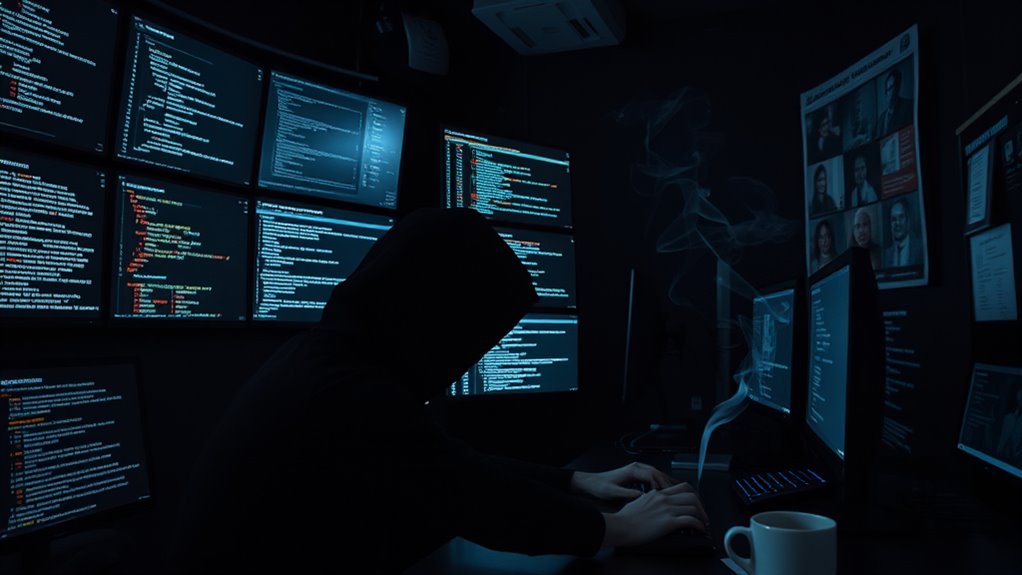
The lessons learned from the 9/11 attacks serve as a vital blueprint for enhancing cybersecurity in today's digital landscape.
The insights gained from the 9/11 attacks provide crucial guidance for strengthening modern cybersecurity efforts.
You must recognize that preparedness and swift responses are essential to tackle emerging threats. Here are three key takeaways:
- Real-time Data Sharing: Break down silos between government and private sectors to share threat data instantly.
- Investment in Technology: Leverage advanced technologies like AI and big data analytics to identify and address vulnerabilities proactively.
- Emphasis on Resilience: Build systems that can withstand attacks, ensuring stability during cyber incidents. Additionally, cybersecurity vulnerabilities highlighted during significant outages underscore the need for robust contingency plans.
The Evolution of Threats: Traditional Terrorism vs. Cyberterrorism
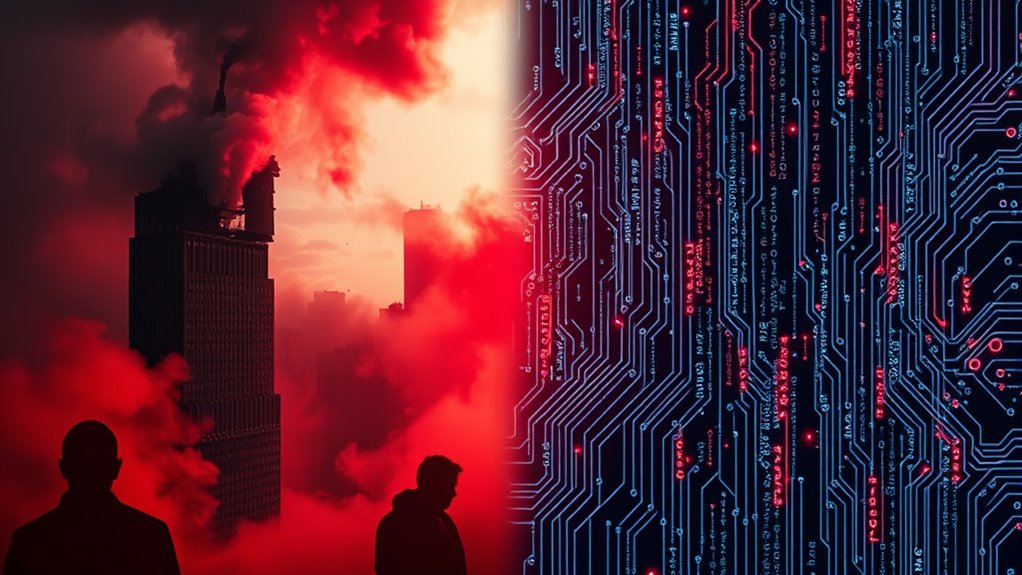
When you think about traditional terrorism, you often picture a single, explosive event that grabs attention quickly.
In contrast, cyberterrorism can stretch over time, targeting critical infrastructure and creating chaos in ways that mightn't be immediately visible.
Understanding these differences in attack duration and strategies can help you grasp the evolving nature of these threats.
Attack Duration Comparison
While traditional terrorism often manifests in a single, catastrophic event, cyberterrorism evolves through prolonged, multifaceted campaigns that can stretch over extended periods.
The attack duration in cyberterrorism poses unique challenges, often allowing adversaries to exploit vulnerabilities in AI effectively.
Consider the following:
- Sustained Disruption: Cyberattacks, like the Costa Rica ransomware incidents, can cripple systems for months, leaving communities vulnerable.
- Long-Term Access: Attackers may maintain access to systems for years, allowing them to strike when least expected.
- Emotional Toll: The constant threat creates anxiety and uncertainty among individuals and organizations, eroding trust in systems we depend on.
This evolving nature of cyberterrorism emphasizes the need for continuous vigilance and adaptive strategies to counteract these persistent attacks. Furthermore, the integration of NLP technology in cybersecurity can enhance threat detection and response capabilities, making systems more resilient to attacks.
Infrastructure Targeting Strategies
As cyberterrorism continues to evolve, its strategies for targeting infrastructure have become increasingly sophisticated, reflecting a shift from the tactics of traditional terrorism.
Unlike traditional attacks that often occur in a single day, cyberattacks can unfold over extended periods, aiming for prolonged disruption. The use of AI enables attackers to identify potential vulnerabilities in critical infrastructure, complicating defense efforts.
With much of this infrastructure controlled by the private sector, collaboration is essential for effective cybersecurity. The lack of centralized information before 9/11 highlighted the need for real-time data sharing among all sectors.
Incidents like the ransomware attacks on Costa Rica underscore the urgent need for robust measures to address the evolving cyber threats facing national security.
The Role of Private Sector in Cyber Defense

Given that the private sector manages a large portion of essential infrastructure, its collaboration with government agencies is fundamental for a thorough cybersecurity strategy.
Private cybersecurity firms play a significant role in defending against cyber threats. Here are three reasons why their partnership is indispensable:
Private cybersecurity firms are crucial allies in the fight against cyber threats, providing expertise, data sharing, and technological investment.
- Expertise: These firms bring specialized knowledge and innovative solutions tailored to protect sensitive systems.
- Real-time Data Sharing: Collaboration improves threat detection and enhances situational awareness, allowing for quicker responses to emerging risks.
- Investment in Technology: With global cybercrime costs reaching $10.5 trillion, robust defenses are necessary to safeguard our infrastructure. Additionally, low light office plants can contribute to a healthier work environment, which indirectly supports better focus on cybersecurity initiatives.
Together, the private sector and government can build a resilient cybersecurity landscape, ensuring that we're better prepared to face evolving threats.
Real-World Incidents of Cyberterrorism
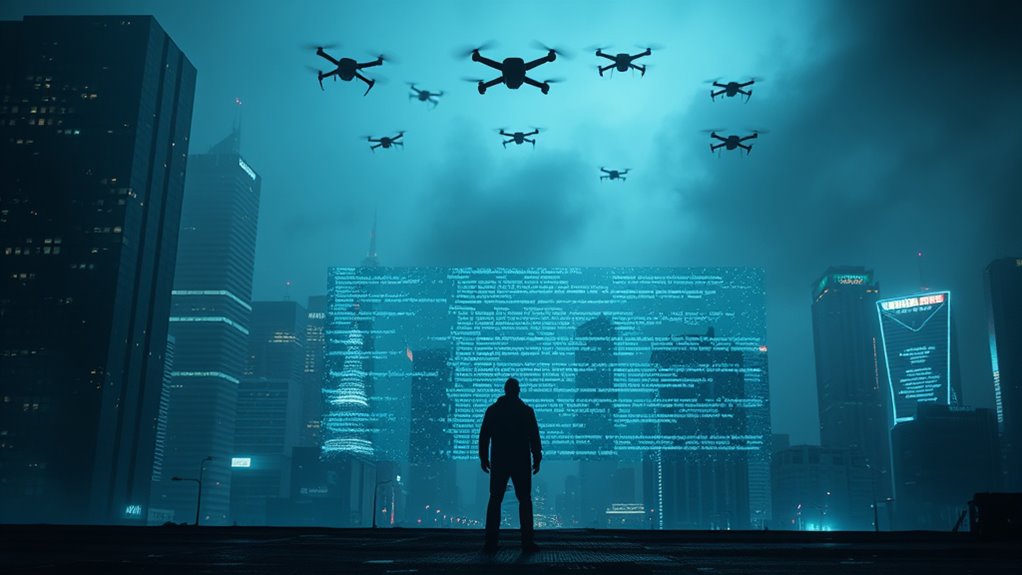
Cyberterrorism is no longer just a theoretical threat; it's a reality that has manifested in alarming incidents around the world.
In November 2024, the Salt Typhoon Hack demonstrated state-sponsored cyberterrorism when Chinese hackers breached telecommunications companies, accessing sensitive communications.
Just a month earlier, fake bomb threats against Ukrainian embassies caused widespread panic, showing how cyberterrorism can impact public safety and international relations.
The 2020 ransomware attacks on Costa Rica's government by the pro-Russian group Conti demanded $10 million and crippled essential services, costing millions daily.
Following this, the Hive group targeted Costa Rica's Social Security system, impacting healthcare.
These incidents highlight the urgent need for robust defenses against AI-driven phishing attacks and other cyber threats that could compromise national security.
The Impact of AI on Cybersecurity and Cyberterrorism
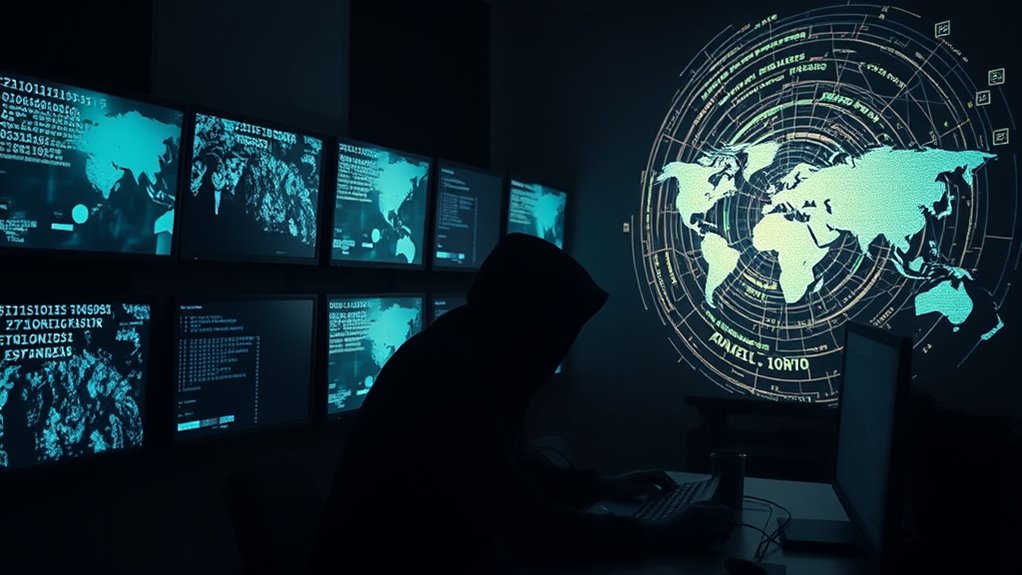
The landscape of cybersecurity is rapidly evolving, influenced considerably by advancements in artificial intelligence.
The rapid evolution of cybersecurity is significantly shaped by the advancements in artificial intelligence.
While AI can be used to enhance threat detection and automate incident responses, it also poses serious risks for cyberterrorism.
Here are three key impacts to evaluate:
- Increased efficiency: Adversaries can conduct social engineering attacks like deepfake spear phishing with minimal oversight, making these threats harder to detect.
- Exploitation of vulnerabilities: Adversarial machine learning can manipulate AI systems, allowing cybercriminals to bypass defenses.
- Automated attacks: AI can facilitate rapid, automated malware infections, leaving organizations vulnerable.
As AI continues to advance, the balance between enhanced security and emerging threats becomes increasingly precarious.
Strategies for Enhancing Cyber Resilience
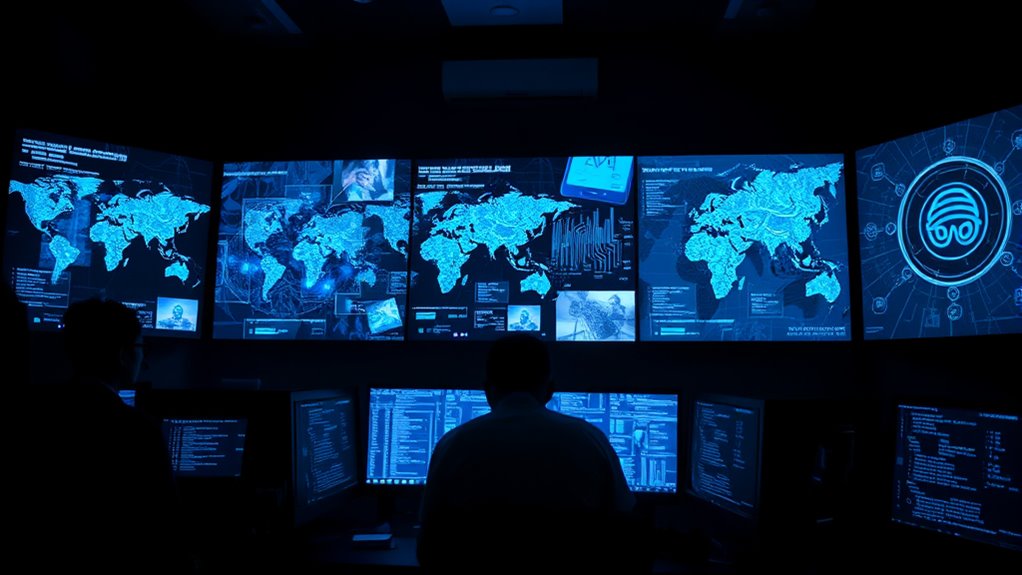
To build a strong defense against cyber threats, you need to prioritize real-time threat sharing between the public and private sectors.
Collaborating effectively can help you stay ahead of potential attacks and guarantee a coordinated response.
Real-time Threat Sharing
While many organizations work tirelessly to strengthen their cybersecurity measures, real-time threat sharing has emerged as a game changer in enhancing cyber resilience.
By fostering immediate communication among stakeholders, you can mitigate the impact of cyberattacks and boost collective defense strategies.
Here are three essential benefits of real-time threat sharing:
- Improved Situational Awareness: You'll gain insights into potential threats and vulnerabilities, enabling quicker responses.
- Effective Threat Detection: Transparency leads to better collaboration, breaking down information silos that hinder your cybersecurity efforts.
- Minimized Damage: Rapid identification and isolation of infected devices can greatly reduce the harm caused by cyber incidents.
Moreover, the integration of AI significantly enhances cybersecurity measures, allowing for more proactive threat identification and response strategies.
Embracing real-time threat sharing is vital for adapting to the ever-evolving landscape of cyber threats.
Public-Private Collaboration
Real-time threat sharing sets the stage for effective public-private collaboration, which is essential for enhancing cyber resilience.
Since significant infrastructure is largely managed by private entities, strong partnerships between public and private sectors are key to developing extensive defense strategies.
By sharing threat data in real-time, both sectors can improve situational awareness and create a collective defense against evolving cyber threats.
The government plays a critical role in facilitating information distribution, preventing silos that can hinder response efforts.
Investing in cybersecurity technology, like big data analytics and AI, is fundamental for enhancing threat detection and incident response.
Joint initiatives and continuous collaboration between government agencies and private firms are pivotal for adapting to the ever-changing threat landscape and strengthening national cybersecurity.
Frequently Asked Questions
How Is AI Changing Cyber Attacks?
AI's changing cyber attacks by making them more sophisticated and efficient.
You'll notice that automated processes allow adversaries to launch complex attacks with minimal effort.
With AI, they can quickly analyze data, spot vulnerabilities, and execute malware autonomously.
Plus, techniques like deepfake spear phishing and adversarial machine learning help them evade detection.
As a result, you need to stay vigilant and continually update your security strategies to counter these evolving threats.
Is Cyber Terrorism on the Rise?
Oh sure, let's just leave our digital doors wide open and hope for the best!
Cyber terrorism's on the rise, and it's not just a bad joke anymore. You're witnessing an alarming increase in attacks targeting essential services, and it's costing businesses trillions.
With hackers using sophisticated AI tools, you've got to ask: how secure is your data?
It's time to take this threat seriously and prioritize robust cybersecurity measures before it's too late.
What Is the Trend of AI Powered Cyber Attacks?
AI-powered cyber attacks are increasingly sophisticated and prevalent. You might notice that adversaries now use AI to automate malware, making attacks more stealthy and efficient.
Techniques like deepfake spear phishing are becoming common, making it harder to detect scams. While AI can enhance threat detection, it also creates new vulnerabilities.
Staying informed and vigilant is essential, as the tactics employed by cybercriminals continue to evolve with advancements in AI technology.
Why Is Cybersecurity Growing so Fast?
Imagine a hospital's network shutting down due to a ransomware attack, halting surgeries and endangering lives.
That's why cybersecurity's growing fast. As cybercriminals become more sophisticated, organizations realize they can't afford to ignore these threats.
Companies invest heavily in cybersecurity solutions to protect sensitive data and critical infrastructure.
With the rise of AI enhancing threat detection and response, businesses are racing to adopt robust strategies, ensuring they're prepared for evolving cyber risks.
Conclusion
As we navigate the complexities of cyberterrorism, it's essential to remember that understanding the past shapes our future. By learning from 9/11, adapting our defenses, and leveraging AI, we can turn the tide against evolving threats. Whether you're in the public sector or private industry, your role in enhancing cyber resilience is critical. Together, we can fortify our systems, protect our communities, and guarantee a safer digital landscape for everyone. The challenge is great, but so is our resolve.
